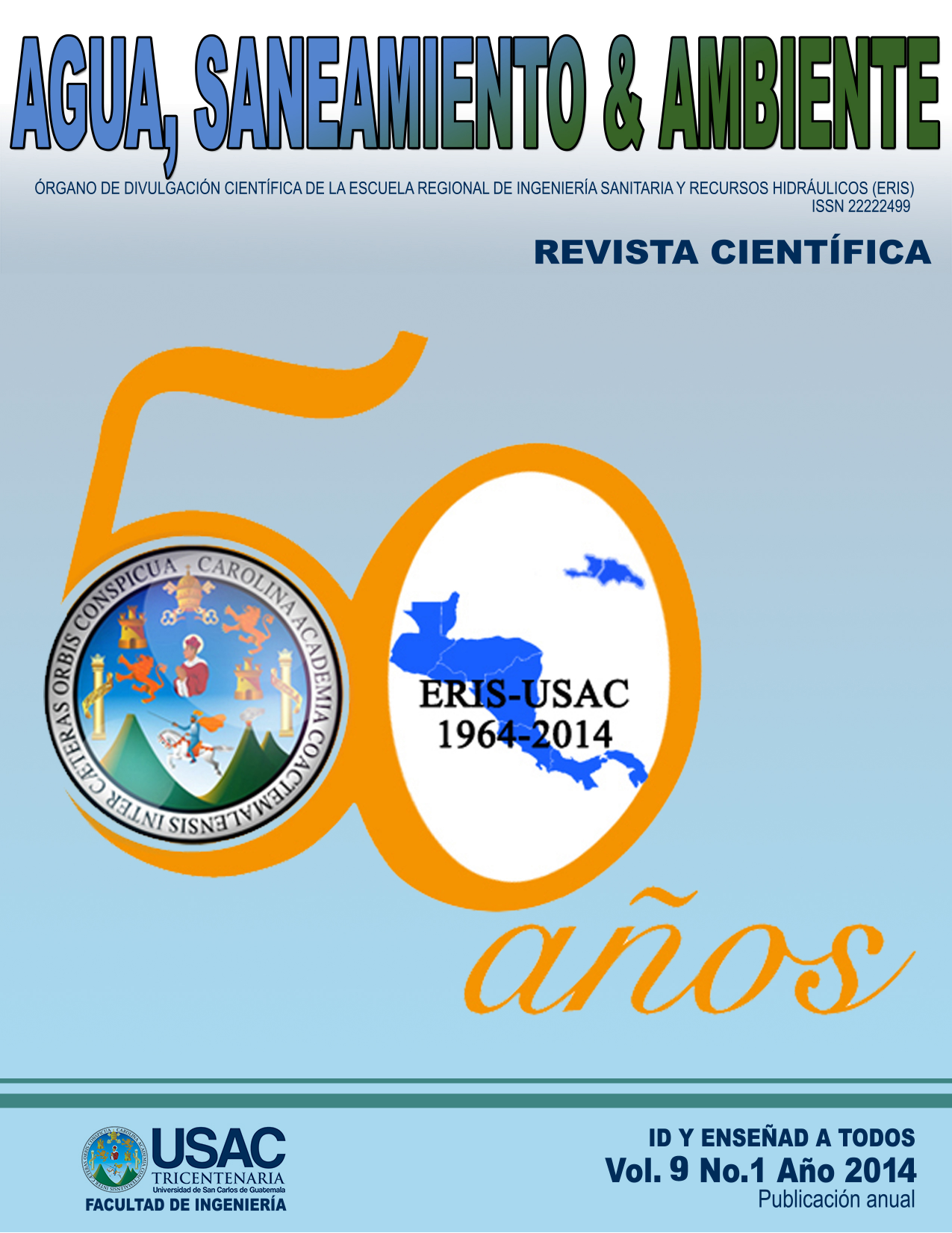REMOCIÓN DE COLOR CON BIORREACTOR DE MEMBRANA EN AGUAS RESIDUALES DE ORIGEN TEXTIL DEL MUNICIPIO DE TECPÁN, DEPARTAMENTO DE CHIMALTENANGO
DOI:
https://doi.org/10.36829/08ASA.v9i1.1457Keywords:
color, sewage, wastewater characteristics, membrane bioreactor, textile dyeing, sewage treatment systemAbstract
Wastewater of Tecpán, Chimaltenango is colored due possibly to industrial wastewater. Textile dyeing is an important industrial activity, within the production process includes the use of water which is then discharged with physical and chemical characteristics altered to Xayá River. Given the characterization of the wastewater made, a critical parameter that has increased over time is color, and may be related to the textile dyeing. The maximum value measured of color on two important wastewater downloads is 1,375 UC. For the efficient removal of color, an alternative and new technology can be implemented by using membrane bioreactor as edgy option to protect the health, preserve the environment and comply with current legislation. The system is more efficient in removing organic matter, microorganisms and dyes than the traditional system, the activated sludge. By treatment with membrane ensures better quality of treated water, free of suspended solids, obtaining superior purification treatment, use of a smaller area than the traditional method, potentially reusable effluent quality, low sludge production and the possibility of leave out expensive tertiary treatment.
Downloads
References
ACUERDO GUBERNATIVO NO. 236-2006. REGLAMENTODE LAS DESCARGAS Y REUSO DE AGUASRESIDUALES Y DE LA DISPOSICIÓN DE LODOS.Guatemala. Diario de Centroamérica. 5 de mayo de2006.Guatemala.
BAUNMGARTEN, S. SCHÖDER, H,. PINNEKAMP, J. 2006.Performance of membrane bioreactors used for thetreatment of wastewater from the chemical and textileindustries. Wat. Sci.& Technol, On-line version ISSN2145-9371.
Biorreactores de membrana: tecnología para eltratamiento de aguas residuales. UniversidadVeracurzana. Disponible en:http://www.uv.mx/cienciahombre/revistae/vol24num3/articulos/. Consultado el 11 deagosto de 2013.
CORADO, H. 2010. Diseño de un biorreactor demembrana para la regeneración de lasaguas residuales en un establecimientohotelero. Tesis de grado de la Escuela deIngeniería Civil, Facultad de Ingeniera,Universidad de San Carlos de Guatemala.
DEPARTMENT OF CIVIL ENGINEERING.Microbiology for Sanitary Engineers.Universidad de Kansas. Mc Graw Hill Seriesin Sanitary Engineering.
ENVIRONMENTAL PROTECTION AGENCY. WasteWater Collection, Treatment and Storage.USA: EPA. 1999.
METCALF & EDDY. 1996. Ingeniería de aguasresiduales. Tratamiento, vertido yreutilización. México: Mc Graw Hill.
RUIZ, J. 2010. Construcción y Monitoreo deVariables de un Prototipo para elTratamiento Biológico de un Efluente conColorante Naranja II, Mediante el HongoTrametes Versicolor. Centro Nacional deInvestigación y Desarrollo Tecnológico.Departamento de Mecatrónica. México.
SALAZAR, L., CRESPI. M, SALAZAR, R. 2009.Treatment of textile waste water bymembrane bioreactor. Ingeniería yDesarrollo 26, ISSN: 0122-3462.
ULTRA PURE TECH DIVISION. Biorreactores demembrana MBR. Disponible en:http://www.ultrapure.info/productos_MBR/biorreactores_membrana_MBR.asp
Downloads
Published
How to Cite
Issue
Section
License

This work is licensed under a Creative Commons Attribution-NonCommercial-ShareAlike 4.0 International License.







